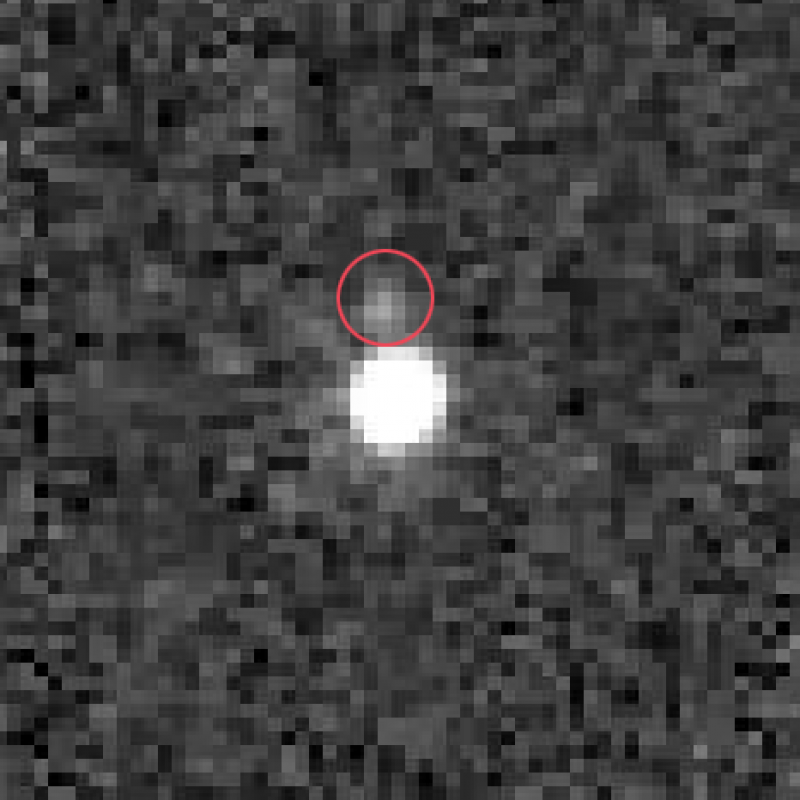 |
|
The Hubble Space Telescope took this photo of 2007 OR10 on September 18, 2010. Later analysis of the images revealed the presence of a moon (red circle). NASA photo. |
The largest known trans-Neptunian object lacking a moon is 2007 OR 10, or actually, was 2007 OR 10. Turns out it does have a moon thanks to analysis of Hubble telescope photography released in a poster by Gábor Marton, Csaba Kiss, and Thomas Mueller recently.
Most of the other big worlds have at least one: Pluto has Charon, Styx, Nix, Hydra and Kerberos; Eris has Dysnomia; Makemake has one discovered this year; Haumea has Hi'iaka and Namaka; Orcus has Vanth; Quaoar has Weywot. Now Sedna is the largest known object out there for which we have not -- yet -- discovered a moon.
With a slow rotation period of 45 hours, astronomers have suspected for a while that 2007 OR10 had a moon, whose tidal interactions with the primary would have been responsible for slowing its rotation. Marton et al report the discovery in a set of older Hubble WFC3 images taken in September 2010. The new moon likely has a diameter of roughly 300 kilometers (roughly Hyperion-sized), as compared to 2007 OR10's roughly 1575 kilometers (roughly Rhea-sized). Although 300 kilometers is fully 20% of the diameter of the primary, Marton and coworkers state that, given a likely very dark surface, it doesn't contribute enough reflected light to 2007 OR10's signal to affect diameter estimates for the larger body. It is also too far from the parent body for the two to be in mutually synchronous rotation.
Read more: The Planetary Society